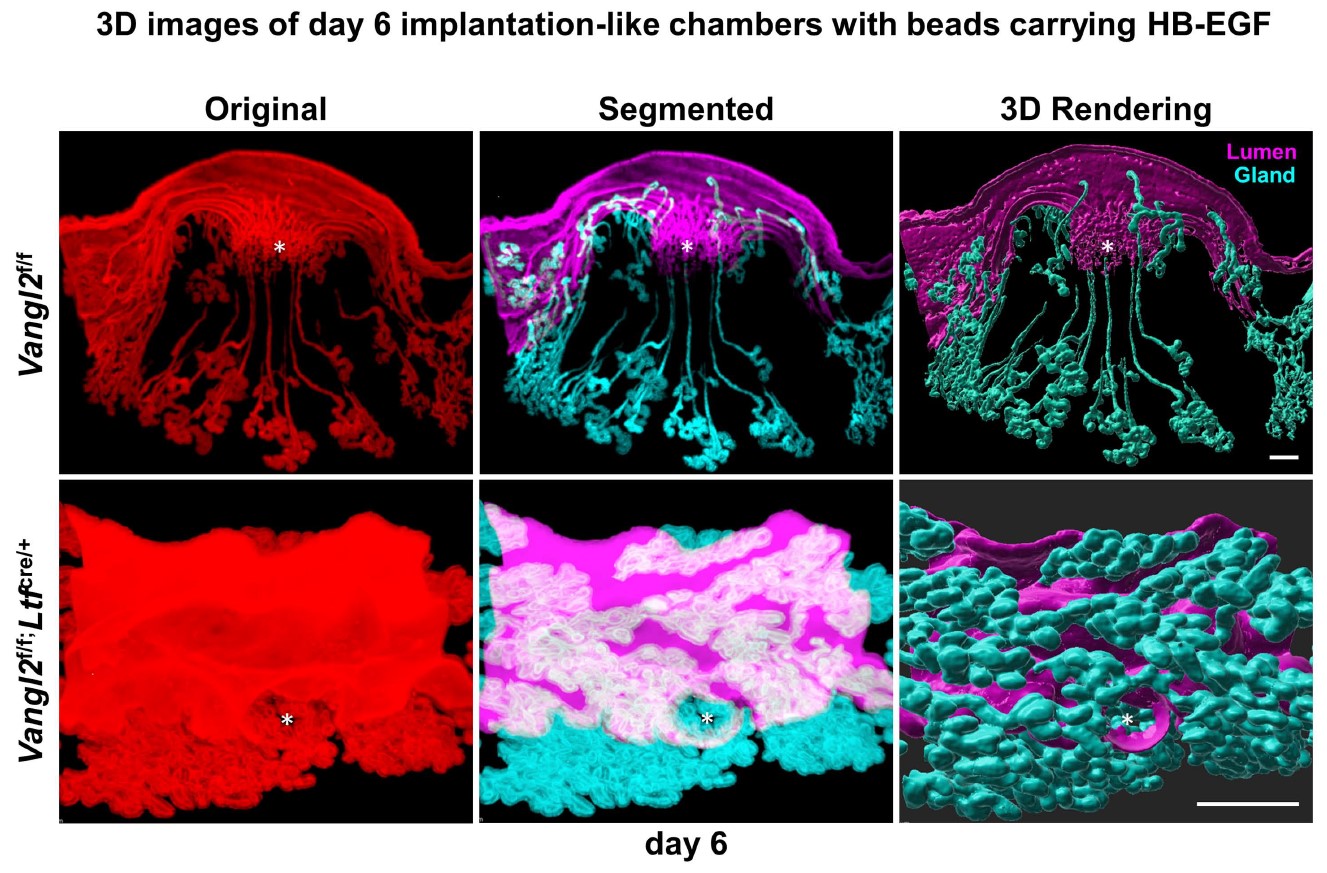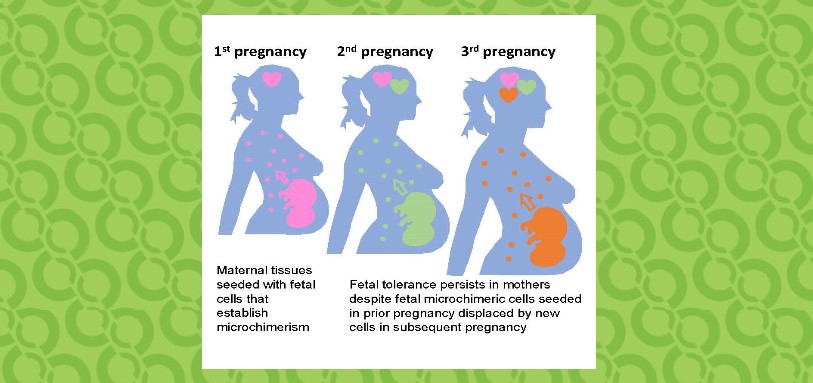Tiny Sepharose Blue Beads Help Scientists Discover a ‘Landing Signal’ Vital to Early Moments of Pregnancy
Research By: Xiaofei Sun, PhD | Sudhansu K. Dey, PhD
Post Date: May 8, 2023 | Publish Date: May 8, 2023

Newly detected communication between two genes involved in embryo implantation adds to understanding of how some pregnancies fail to get a solid start, according to experts at Cincinnati Children’s
The earliest moments of embryo implantation at the beginning of a pregnancy are proving to be far more complex than landing a spaceship safely on a distant planet.
So much signaling involved. So many sequences of activity that must be executed perfectly. So many ways for things to go wrong.
Now reproductive sciences experts at Cincinnati Children’s have discovered another critical biological subroutine that must function correctly, or the pregnancy can fail. Detailed findings were published online May 8, 2023, in the journal PNAS. The work was led by first author Yeon Sun Kim, PhD, and corresponding authors Xiaofei Sun, PhD, and Sudhansu K. Dey, PhD.
Specifically, the team reports detecting vital landing signals being sent between two genes (HB-EGF and Vangl2) as they become expressed in higher concentrations in the uterus before implantation occurs. In mice, HB-EGF expression begins just in the maternal uterus adjacent to the embryo a few hours before the embryo “lands.” This cell-to-cell communication prompts the lining of the uterus to prepare an implantation chamber, or crypt, to receive the incoming embryo.
When the signaling goes wrong, a malformed crypt results, and the embryo loses its safe place to land. From that point, a poorly attached embryo cannot receive the initial nutrients, blood vessel connections and other support it needs for ongoing growth and development.
Dey’s lab has been studying the role of Vangl2 in successful pregnancy for several years and has published several studies detailing aspects of its function (see studies in Nature Communications and PNAS). This signaling interaction with HB-EGF had not been discovered until now.
Tiny blue beads show the way
Much of the complexity in decoding the steps of early pregnancy comes down to determining which entity is controlling the signal exchange: the mother or the fetus or both.
To reduce the variables involved, Dey lab devised the equivalent of an unmanned spaceship. Instead of an actual embryo, the team coated tiny blastocyst-sized beads with HB-EGF proteins.
These Sepharose beads—made from a polymer material extracted from seaweed—are used in a variety of research and industrial applications. They are blue because the blue dye itself helps bind with targeted molecules and compounds.
“Using the beads eliminated other signals emitted by the embryo, thus allowing us to confirm the specific role HB-EGF plays during implantation in concert with Vangl2,” Sun says.
The team also showed that beads lacking HB-EGF failed to trigger landing preparations in the uterine lining.
“Our discovery of this unique dialogue between HB-EGF and Vangl2 advances our understanding of basic biological processes during embryo implantation,” Dey says. “While this study involved mouse models, the human proteome atlas documents the presence of HB-EGF, as well as Vangl2 in the uterus, and HB-EGF is expressed prior to the “window of implantation” in humans. Thus, this interaction may well be conserved in human implantation.”
Implications and next steps
These results suggest potential targets for developing tests to predict the risk of fertility complications and may also facilitate treatments for successful pregnancy for women who carry gene variants that may disrupt embryo implantation.
Dey says it will be largely up to other fertility experts to further develop any tests or treatments inspired by these findings. The Dey lab plans to continue its explorations of other mechanisms at work during the earliest moments of pregnancy.
About the study
In addition to Kim, Sun and Dey, Cincinnati Children’s co-authors included Jia Yuan, PhD, and Amanda Dewar, MS. The study also included collaborations with experts at Texas A & M University and the Centre de Recherche en Cancérologie in Marseille, France.
Funding sources included grants for the National Institutes of Health (HD103475 and HD068524); and the National Research Foundation of Korea (NRF-2021R1A6A3A03038446). The authors declare no competing interests.
| Original title: | An unanticipated discourse of HB-EGF with VANGL2 signaling during embryo implantation |
| Published in: | PNAS |
| Publish date: | May 8, 2023 |
Research By

Using genetically engineered mouse models, we work to define the uterine characteristics and circumstances necessary for successful embryo implantation, the implications of uterine aging and the origins of reproductive carcinomas.

Our lab’s goal is to understand the endocrine, paracrine, autocrine and juxtacrine signaling networks that influence uterine biology.






